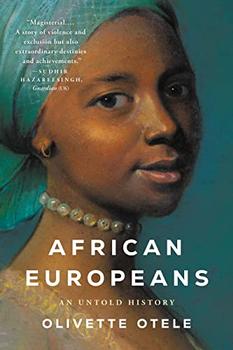Summary | Excerpt | Reviews | Beyond the book | Read-Alikes | Genres & Themes | Author Bio

In this landmark work, one of the world’s most renowned Egyptologists tells the epic story of this great civilization, from its birth as the first nation-state to its final absorption into the Roman Empire—three thousand years of wild drama, bold spectacle, and unforgettable characters.
In this landmark work, one of the world's most renowned Egyptologists tells the epic story of this great civilization, from its birth as the first nation-state to its final absorption into the Roman Empire—three thousand years of wild drama, bold spectacle, and unforgettable characters.
Award-winning scholar Toby Wilkinson captures not only the lavish pomp and artistic grandeur of this land of pyramids and pharaohs but for the first time reveals the constant propaganda and repression that were its foundations. Drawing upon forty years of archaeological research, Wilkinson takes us inside an exotic tribal society with a pre-monetary economy and decadent, divine kings who ruled with all-too-recognizable human emotions.
Here are the years of the Old Kingdom, where Pepi II, made king as an infant, was later undermined by rumors of his affair with an army general, and the Middle Kingdom, a golden age of literature and jewelry in which the benefits of the afterlife became available for all, not just royalty - a concept later underlying Christianity. Wilkinson then explores the legendary era of the New Kingdom, a lost world of breathtaking opulence founded by Ahmose, whose parents were siblings, and who married his sister and transformed worship of his family into a national cult. Other leaders include Akhenaten, the "heretic king," who with his wife Nefertiti brought about a revolution with a bold new religion; his son Tutankhamun, whose dazzling tomb would remain hidden for three millennia; and eleven pharaohs called Ramesses, the last of whom presided over the militarism, lawlessness, and corruption that caused a crucial political and societal decline.
Riveting and revelatory, filled with new information and unique interpretations, The Rise and Fall of Ancient Egypt will become the standard source about this great civilization, one that lasted - so far - longer than any other.
If you can accept the thesis that the history of ancient Egypt is the history of a small, narrowly concentrated group of elites brutally exercising their power over a whipped, starved, and constantly downtrodden populace, and can also accept Wilkinson's occasional overstatement of it, then you will find The Rise and Fall of Ancient Egyptian not only a satisfying and comprehensive survey on ancient Egypt but also a narrative tour de force dramatically following the deeds and misdeeds of thirty centuries of Pharaohs, priests, architects, generals, barbarians, peasants, and rebels. General audiences should have no problem being engrossed by this book, though the reader should keep in mind what to expect from historical writing...continued
Full Review
(893 words)
This review is available to non-members for a limited time. For full access,
become a member today.
(Reviewed by Kevin Bartolotta).
One of the most difficult things to keep straight about ancient Egypt is its dynastic chronologies, thirty-three families of rulers over thousands of years, full of contradictions, inaccuracies, and outright lies. To offer some assistance I have included an incomplete list of the important dynasties, with a few details about each period; relevant Pharaohs, important events and so forth, from Wilkinson's timeline.
First Dynasty. c.2950-c.2750 BCE
The unification of Upper and Lower Egypt.
 Third Dynasty, c.2650-c.2575 BCE
Third Dynasty, c.2650-c.2575 BCE
Notable for the construction of the Step Pyramid of Djoser, one of the first pyramids.
Fourth Dynasty, c.2575-c.2450 BCE
The apex of the pyramid age; construction of the Great Pyramid and the Sphinx.
...
This "beyond the book" feature is available to non-members for a limited time. Join today for full access.

If you liked The Rise and Fall of Ancient Egypt, try these:

by Daisy Dunn
Published 2024
A dazzlingly ambitious history of the ancient world that places women at the center—from Cleopatra to Boudica, Sappho to Fulvia, and countless other artists, writers, leaders, and creators of history

by Olivette Otele
Published 2023
A dazzling history of Africans in Europe, revealing their unacknowledged role in shaping the continent.
Most of us who turn to any subject we love remember some morning or evening hour when...
Click Here to find out who said this, as well as discovering other famous literary quotes!